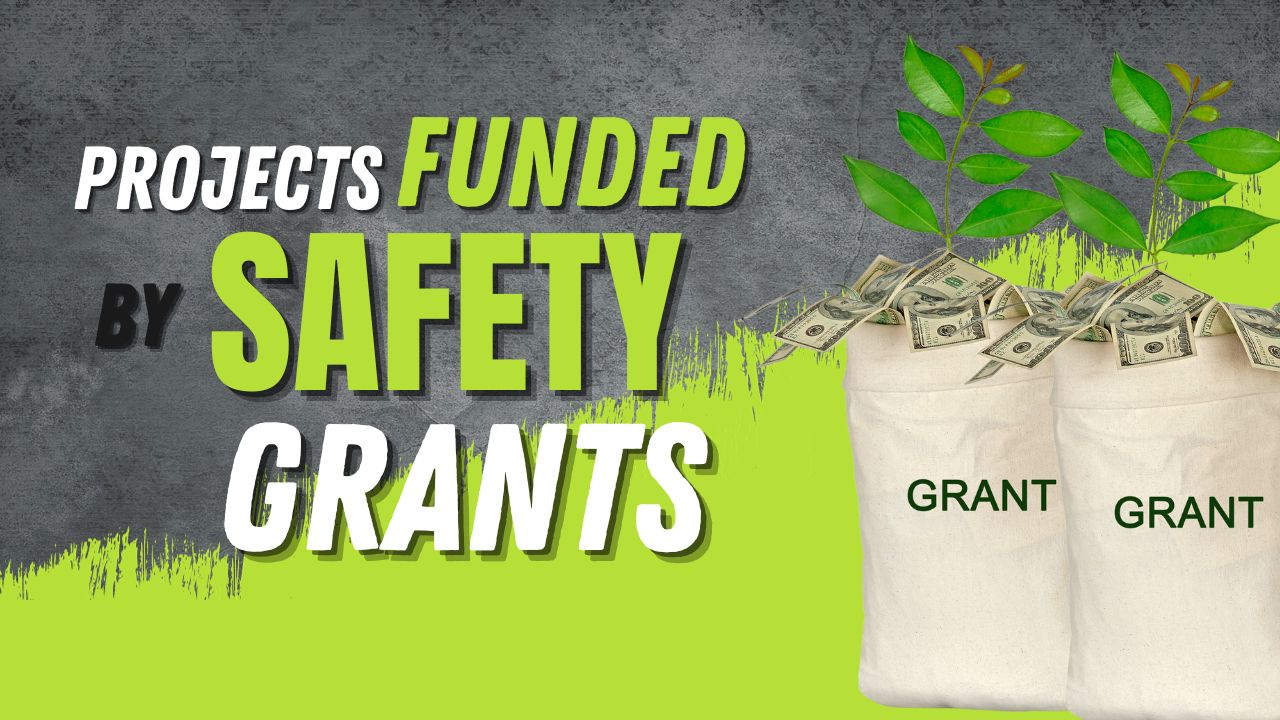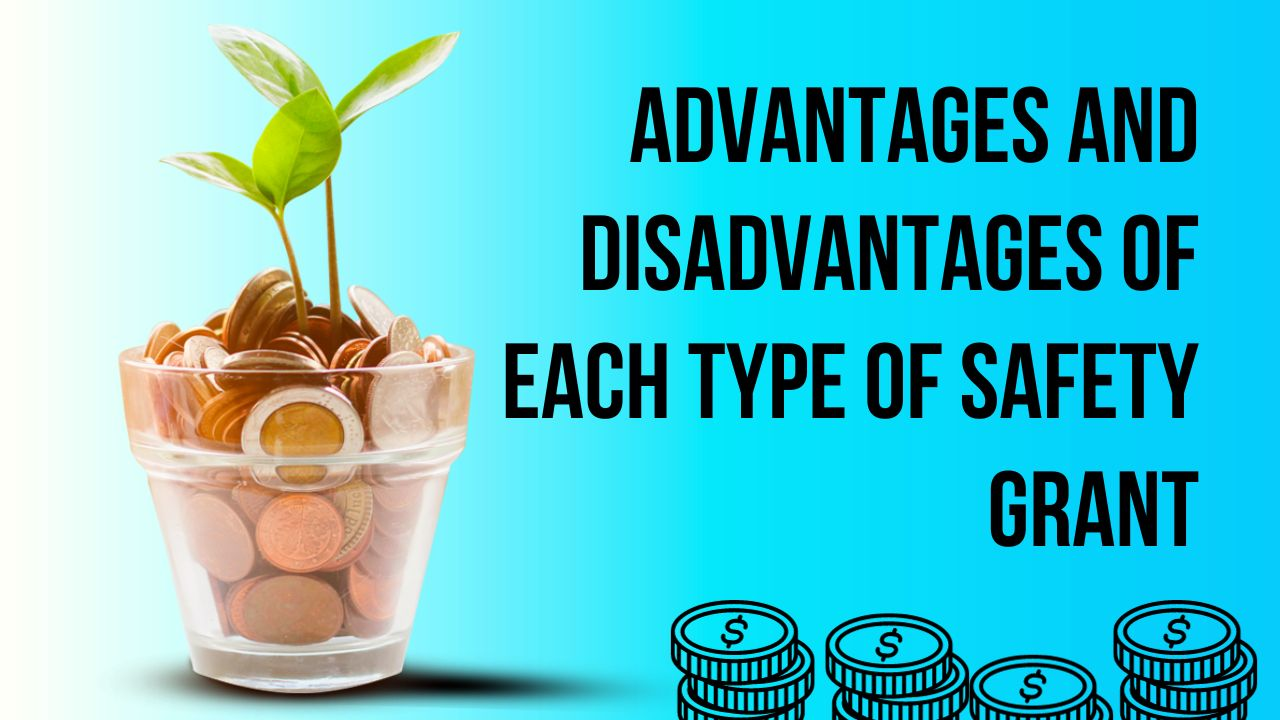Navigating Safety Grant Programs: Federal vs. State vs. Private Grants
Sep 21, 2023
Understanding the intricacies of safety grant programs can be a complex task, particularly when it comes to differentiating between federal, state, and private grants. Each category has its own set of rules, application processes, and funding parameters. That's why this blog post, "Navigating Safety Grant Programs: Federal vs. State vs. Private Grants," is designed to help you navigate these waters with confidence. We'll delve into the specifics of each type of grant, discuss their benefits and drawbacks, and provide you with practical tips for applying. Whether you're a seasoned grant applicant or a newcomer to the field, this guide is sure to provide valuable insights to aid your journey through the world of safety grant programs. Let's get started!
What are the Differences Between Federal, State, and Private Safety Grants?

Federal, state, and department, and private safety grants differ in several ways, including their sources, application processes, and purposes.
Sources
Federal grants are provided by the federal government, state grants come from state governments, while private grants are offered by private entities such as foundations or corporations
Application Process
The application process for federal grants can be more complex than for state and especially private grants. Private or foundation grants are generally simpler all around
Purpose:
Federal grants are often directed towards state and local governments, universities, research labs, law enforcement, and non-profit organizations. These grants may finance critical programs and services across a variety of sectors. State grants have similar purposes but are typically more focused on local needs. Private grants, on the other hand, may have a wider range of purposes depending on the specific mission of the organization providing the grant program.
Amounts
The amount of funding can also vary. Federal and state grants often provide larger amounts of funding, while individual private grants can be smaller
Restrictions
Some federal grants are restricted to specific purposes, such as health care. Private funding does not entail public funds and may include both grants and gifts, depending on the organization's mission.
It's important to note that eligibility requirements, deadlines, and reporting expectations can also differ significantly between these types of grants.
Who is Eligible to Apply for Each Type of Safety Grant?

The eligibility criteria for safety grants can vary widely depending on the type of grant and its specific purpose. Here are some general guidelines:
Federal Safety Grants
These are typically available to state or local governments, Indian tribes, universities, research institutions, non-profit organizations, and sometimes for-profit organizations. Specific federal safety grants might be dedicated to certain sectors like transportation, workplace safety, public health, or emergency response.
State Safety Grants
Eligibility for these often mirrors that of federal grants but is usually more focused on entities within the state. This can include state agencies, municipalities, non-profit organizations, schools, and sometimes individuals or businesses. The focus of these grants might be on areas like highway safety, community safety initiatives, or local preparedness efforts.
Private Safety Grants
These are often the most varied in terms of eligibility. Private foundations or corporations may offer safety grants to non-profit organizations, educational institutions, individuals, or even businesses, depending on the foundation's mission and the specific grant's purpose. These grants can cover a wide range of safety issues, from community safety projects to research into safety technologies.
Always remember to check the specific eligibility requirements for each grant you're considering, as these can vary greatly.
How is the Application Process Different for Federal, State, and Private Safety Grants?

The application processes for federal, state, and private safety grants can differ significantly in terms of complexity, timeline, and requirements:
Federal Safety Grants
The application process for federal grants is often the most complex. It typically involves registering with an official government system like Grants.gov or SAM.gov. Applicants may need to obtain a Data Universal Numbering System (DUNS) number and a UEI number. The process may take several days to complete and requires careful preparation of sub application materials. Federal grants usually have strict deadlines and require detailed reporting on how grant funds are used. These grants are often targeted towards nonprofit organizations and local government agencies for physical security enhancements and other safety-related projects.
State Safety Grants
State grant application processes can vary widely depending on the specific state and grant program. Some might be as complex as federal grants, requiring similar registration and application steps. Others may be simpler, with applications submitted directly through a state's website or via email. Deadlines and reporting requirements also tend to vary. These grants often provide funding opportunities to address specific local safety issues.
Private Safety Grants
These typically have the simplest application processes. Depending on the foundation or corporation, you may be able to apply directly on their website or via email. Private grants often have more flexibility in terms of deadlines and reporting requirements. However, they may also have specific eligibility criteria that align with the organization's mission. Unlike federal and state grants, these do not use federal funds and can therefore have different stipulations on usage.
Always check the specific application instructions for each grant you're considering, as these can vary greatly.
What Types of Projects are Typically Funded by Federal, State, and Private Safety Grants?

Federal, state, and private safety grant programs typically fund a wide range of projects aimed at enhancing safety and security. Here's a breakdown of the types of projects commonly funded by each category of grant program, including keywords such as "private community representatives," "other physical security enhancements," and "grant program":
Federal Safety Grants
1. Disaster Preparedness and Response: Federal safety grants often support projects related to disaster preparedness and response, including the purchase of emergency equipment, training programs, technical assistance, and community drills.
2. Law Enforcement Initiatives: These grants may fund initiatives led by law enforcement agencies to improve community safety, such as hiring additional officers, implementing community policing programs, or purchasing advanced technology for crime prevention.
3. Critical Infrastructure Protection: Federal grant programs support projects aimed at protecting critical infrastructure, including enhancing the security of power plants, water treatment facilities, and transportation hubs.
4. Community Engagement and Outreach: Grants may be awarded to projects that promote community engagement and involvement in safety efforts. "Private community representatives" can play a role of assistance in these initiatives.
5. Homeland Security Enhancements: Federal grants often fund projects to enhance homeland security, such as improving cybersecurity measures, developing emergency communication systems, or upgrading surveillance technology.
6. Training and Capacity Building: Funds may be allocated for training programs that enhance the capabilities provide training of first responders and emergency management personnel.
State Safety Grants
1. Local Emergency Response Teams: State safety grants can support the formation and training of local emergency response teams, including volunteer organizations and community representatives.
2. Infrastructure Improvements: Funds may be used for physical security enhancements in public spaces and critical infrastructure, such as adding security cameras, access control systems, or protective barriers.
3. School Safety: State grant programs often prioritize school safety projects, which can include upgrading security measures in educational institutions and implementing safety training for staff and students.
4. Community-Based Programs: State grants may support community-based safety programs, including neighborhood watch initiatives and programs that involve private community representatives in crime prevention efforts.
5. Disaster Mitigation and Recovery: States may allocate funds for disaster mitigation projects, such as reinforcing buildings and infrastructure to withstand natural disasters or improving early warning systems.
Private Safety Grants
1. Nonprofit Initiatives: Private safety grants often fund nonprofit organizations that focus on community safety and well-being, including those involving private community members as representatives in their projects.
2. Innovative Security Technology: Private grant programs cmay support projects that develop or implement innov.ative security technologies and solutions.
3. Community Development: Grants from private foundations can be used to support community development initiatives, including projects that enhance safety, infrastructure, and the overall quality of life.
4. Mental Health and Wellness Programs: Private safety grants may prioritize projects that address mental health and wellness in the context of safety and security.
5. Education and Awareness Campaigns: Funding may be provided for educational programs and awareness campaigns related to safety issues within communities.
6. Collaborative Partnerships: Private safety grant programs may encourage collaborative partnerships among community organizations, government agencies, and private entities to address safety challenges collectively.
It's important to note that the specific types of projects funded by federal, state, and private safety grants can vary widely depending on the focus and goals of the grant program. Applicants should carefully review the guidelines and priorities of each grant program to determine the best fit for their project ideas.
What are the Advantages and Disadvantages of Each Type of Safety Grant?

Federal Safety Grants:
-
Advantages: Federal safety grants offer significant funding for large-scale projects with national or regional impact. They come with access to expertise, technical resources, and grant management support. Federal grants are typically stable, enhancing an organization's credibility.
-
Disadvantages: These grants are highly competitive with a complex application process and stringent reporting requirements, often leading to longer decision timelines.
State Safety Grants:
-
Advantages: State safety grants align closely with local needs and offer easier application processes. They foster community engagement and partnerships while boasting higher success rates for applicants.
-
Disadvantages: Funding amounts may be limited, and projects are often confined to a specific region. Application requirements and processes can vary widely across states.
Private Safety Grants:
-
Advantages: Private safety grants provide flexibility for innovative solutions and address niche issues. They often have simplified application processes, offer personalized support, and encourage community engagement.
-
Disadvantages: Funding amounts tend to be smaller, availability may be limited, and funding stability can be uncertain. Private grants may still require detailed progress reporting.
In conclusion, the choice of safety grant type should align with project goals and resources. Many organizations pursue a mix of federal, state, and private grants to diversify funding sources and address various aspects of safety initiatives. Careful consideration is essential when selecting the most suitable grant type for your specific needs.
Can You Apply for More Than One Type of Safety Grant at a Time?

Yes, in many cases, it is possible to apply for more than one type of safety grant at a time. Many organizations and individuals seeking funding for safety initiatives pursue a multi-faceted approach by applying for grants from different sources simultaneously.
What are Some Common Mistakes to Avoid When Applying for Safety Grants?

When pursuing safety grants, it's vital to navigate the application process with precision. Common mistakes to avoid include neglecting to thoroughly read grant guidelines, failing to align your proposal with the grant's focus, and submitting incomplete applications. Ignoring eligibility criteria, lacking clarity in your goals, and proposing unrealistic projects are pitfalls to dodge. Additionally, not involving the community or proofreading for errors can harm your chances. Missing deadlines, excluding a comprehensive evaluation plan, and neglecting follow-up and feedback are also errors to steer clear of. By sidestepping these blunders, you can enhance your prospects of securing vital grant funding for your safety initiatives.
Where Can You Find Information About Available Safety Grants?

To access information about available safety grants, you can turn to a variety of sources. Government websites at the federal, state, and local levels often offer safety-related grants. Online databases and grant search engines like Grants.gov and Foundation Directory Online are valuable tools for finding opportunities. Nonprofit organizations, private foundations, and professional associations often provide safety grants, so it's worth visiting their websites. Community foundations, corporate CSR programs, and local government offices can also be sources of grant information. Additionally, staying connected through professional networks, newsletters, and social media platforms can help you stay up-to-date on grant announcements and opportunities in the safety field.